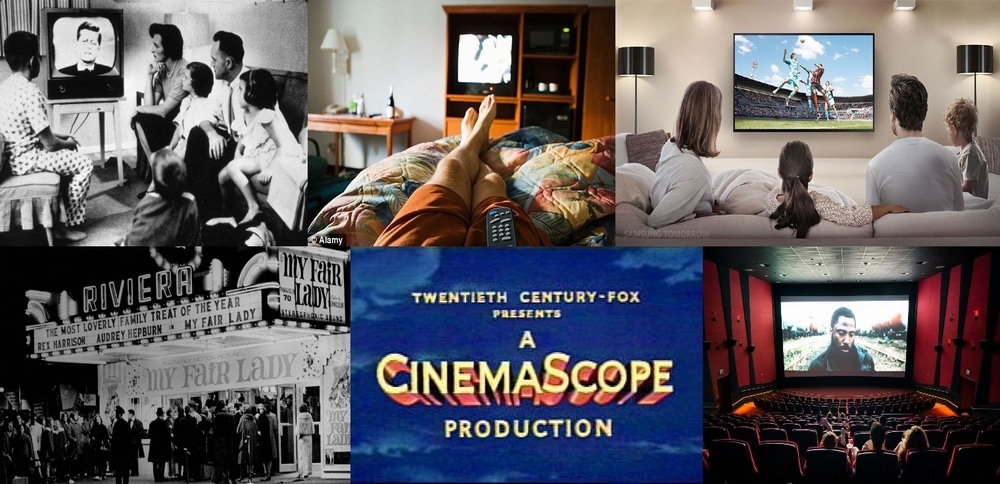Years ago, television provided the elements that made evident how different it was from the cinema. Television was to be enjoyed with the family, in the living room, with the lights on even at night (to protect the vision, according to medical experts), and it was to be enjoyed while casually dressed in one’s favorite plush slippers.
The movie theater, on the other hand, required proper attire (meaning no plush slippers were worn there), and it was mostly a lonely experience for moviegoers (even if they went with friends, and though there were strangers all around) who were lost in space, mesmerized by the silver screen flickering before them in a dark room.
Then, with the advent of portable TV sets, television moved from the living room into the bedroom, and it became a lonely experience for each family member.
While television, with its small screen, became a personal experience, cinema took on a social connotation and its screen took on overwhelmingly large dimensions, and cinema operators became excited about other innovations, such as the armrest cup holder, which was patented in 1981.
Then came the multiplexes and digital cinemas, and the movie screens got smaller and the theaters’ screening rooms were built for fewer people. All this happened while home TV set screens got larger and larger with the advent of digital television and flat screens. The large TV screens brought television back to the living rooms and, with the advent of streaming media, watching newly released movies on television once again became a family event.
Then, in 2020, the pandemic struck and people who’d been forced to stay home watching movies on television started to feel “fatigued,” and began longing for cinemas’ dark rooms, their buttered movie theater popcorn, and seats with cup holders. Let’s hope that moviegoers will soon be able to return to those chairs with cup holders in a big way.












Leave A Comment